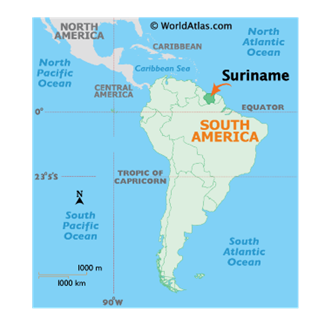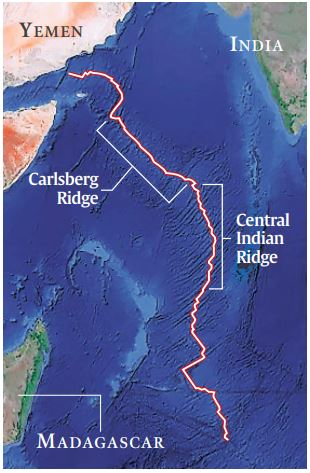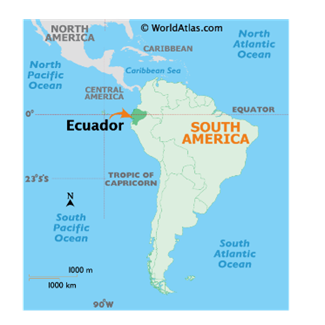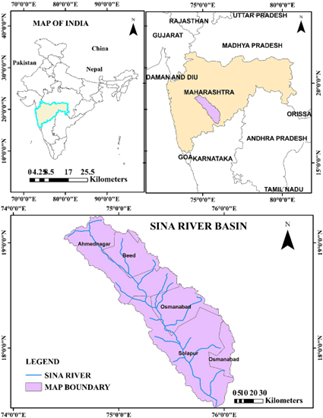Economy
Updated Rangarajan poverty line:
-
- Context: RBI economists updated the Rangarajan poverty line for 20 major states using the 2022-23 Household Consumption Expenditure Survey (HCES), showing substantial poverty reduction since 2011-12.
- Odisha and Bihar had the largest decline in poverty, with rural poverty in Odisha dropping to 8.6% and urban poverty in Bihar to 9.1% in 2022-23.
- Kerala and Himachal Pradesh have the lowest poverty levels, while Chhattisgarh has the highest; rural poverty in Himachal Pradesh is 0.4% and urban poverty in Tamil Nadu is 1.9%, but Chhattisgarh’s rural and urban rates are 25.1% and 13.3%.
- The study used a new price index tailored to the poverty line basket, not the conventional CPI, to adjust poverty thresholds more accurately.
- There is significant debate over actual poverty rates due to differing methodologies; multidimensional poverty, factoring in health, education, and living standards, is now emphasized in government policy.
- According to the government, around 24.8 crore people exited multidimensional poverty in the last nine years, with the national multidimensional poverty rate falling from 29.2% in 2013-14 to 11.3% in 2022-23.
(IE)
International Developments
Wassenaar Arrangement:
-
- Context: Technological issues arising out of Isreal and Palestine war.
- The Arrangement was established in 1996, succeeding the Cold War-era Coordinating Committee for Multilateral Export Controls (COCOM).
- The agreement to form the Arrangement was reached in Wassenaar, a suburb of The Hague, Netherlands, giving the Arrangement its name.
- It has been established in order to contribute to regional and international security and stability, by promoting transparency and greater responsibility in transfers of conventional arms and dual-use goods and technologies, thus preventing destabilising accumulations.
- The aim is also to prevent the acquisition of these items by terrorists.
- Participating states implement their own national export control laws and policies, which are informed by the Arrangement’s guidelines.
- Members share information on specific items that require an export license, including notifications of arms transfers and details of denied transfers.
- The Arrangement helps member states develop and share best practices for implementing effective export controls.
(TH)
Mutual Legal Assistance Treaty (MLAT):
-
- Context: The Assam government has submitted a formal request to the MHA to invoke MLAT with Singapore in connection with singer Zubeen Garg’s death.
- It is a formal agreement between countries to cooperate on criminal investigations by exchanging information and evidence, which involves one country sending a request to the other through designated central authorities, such as India’s Ministry of Home Affairs (MHA).
- As per the Allocation of Business Rules of the Government of India, MHA is the nodal Ministry and the Central authority for seeking and providing mutual legal assistance in criminal law matters.
- MHA receives all such requests, examines them and takes appropriate action.
- Ministry of External Affairs may be involved in this process when such requests are routed through diplomatic channels by these Ministries.
- Section 105 of the Criminal Procedure Code (CrPC) speaks of reciprocal arrangements to be made by Central Government with the Foreign Governments with regard to the service of summons/warrants/judicial processes.
- Accordingly, MHA has entered into Mutual Legal Assistance Treaties/Agreements on Criminal Matters with 39 countries which provide for serving of documents.
- This process facilitates the gathering of evidence like documents, witness statements, and digital data for criminal cases that would otherwise be inaccessible due to cross-border limitations.
(TH)
Geography & Environment
Suriname pledges to protect 90% of forests:
-
- Context: Suriname’s government has pledged to permanently protect 90% of its tropical forests, a move conservationists say is among the most ambitious commitments to climate and biodiversity ever made by an Amazonian nation.
- Some 93% of Suriname is already heavily forested. Scientists also say Suriname is one of only three countries worldwide that absorbs more carbon dioxide than it emits. The other two countries are Bhutan and Panama.
- The pledge far surpasses the “30×30” global target — a UN-backed goal for countries to protect 30% of land and oceans by 2030.
- Suriname is the only country in the Western Hemisphere where Indigenous and tribal land rights are not legally recognised.

(TH)
National Biodiversity Authority (NBA):
-
- Context: NBA sanctioned ₹82 lakh to Andhra Pradesh Biodiversity Board for conserving the endemic Red Sanders (Pterocarpus santalinus).
-
-
- NBA is a statutory body set up in 2003 under the Biological Diversity Act, 2002, headquartered in Chennai.
- It regulates access to biological resources and ensures fair and equitable benefit-sharing from their use, especially with local communities.
- NBA advises the Government of India on biodiversity conservation, supports sustainable use, and helps protect traditional knowledge from biopiracy.
- It coordinates with State Biodiversity Boards and Biodiversity Management Committees to implement biodiversity policies at all levels.
- Funds will be used to raise one lakh Red Sanders saplings and supply them to farmers, supporting the Trees Outside Forests (ToF) programme.
- The funding comes from benefit-sharing collections under the Access and Benefit Sharing (ABS) mechanism of the Biological Diversity Act; local communities and Biodiversity Management Committees will benefit.
- Red Sanders, native to Andhra Pradesh’s Southern Eastern Ghats, is threatened due to smuggling and has legal protection under the Wildlife Protection Act and CITES, restricting its trade.
- The initiative promotes grassroots and community-driven conservation, employment, skill-building, and advances India’s biodiversity commitments internationally.
-
(PIB)
Polymetallic Sulphides exploration:
-
- India signed a contract with the International Seabed Authority (ISA) for exclusive rights to explore Polymetallic Sulphides (PMS) in the Carlsberg Ridge, Indian Ocean.
- India is the first country to hold two ISA contracts for PMS exploration and now commands the largest allocated area for PMS in the international seabed.
- Goa-based NCPOR will conduct exploration, with initial geophysical and hydrographic surveys starting in 2026.
- PMS deposits are rich in metals like copper, zinc, lead, gold, and silver, and are crucial for high-tech, renewable, and green technologies.
- The Carlsberg Ridge is a slow-spreading mid-ocean ridge, closer to India than previously explored ridges, and contains hydrothermal vents with PMS deposits.
- PMS exploration is technically challenging, requiring deep-sea vessels, advanced navigation, and multidisciplinary expertise due to the complex underwater terrain.

(IE)
Mapping/Places in the News
Ecuador:
-
- Context: Protest and tensions flared over a sharp rise in fuel prices.
- Ecuador is located in the western corner at the top of the South American continent.
- Ecuador straddles part of the Andes Mountains and occupies part of the Amazon basin. Situated on the Equator, from which its name derives, it borders Colombia to the north, Peru to the east and the south, and the Pacific Ocean to the west. It includes the Pacific archipelago of the Galapagos Islands.
- The Ecuadoran mainland is divided into three main physical regions: the Costa (coastal region), the Sierra (highland region), and the Oriente (eastern region).
- Many peaks are volcanic or snow-covered; these include Cayambe, Antisana, Cotopaxi, which is one of the world’s highest active volcanoes, Chimborazo, Altar, and Sangay.
- These are included in two ranges connected at intervals by transversal mountain chains, between which are large isolated valleys or basins, called hoyas.

(TH)
Sina River:
-
- Context: It was recently in news due to flooding.
- The Sina River is a major tributary of the Bhima River, which itself is a tributary of the Krishna River.
- It originates near Ahmednagar city in Maharashtra.
- The river’s basin spans four districts of Maharashtra: Ahmednagar, Bid, Osmanabad, and Solapur.
- The Sina basin is classified as a drought-prone, semi-arid region.
- The river suffers from significant pollution due to various sources, including industrial and residential wastewater, dry refuse, agricultural fertilizers, and toxic chemicals like lead, sulphuric acid, and mercury.
- The polluted water is used for irrigation, which can lead to the accumulation of heavy metals in soil and crops, potentially causing health issues and reduced crop quality and yields.

(TH)
Captions and Quotations
India’s role and philosophy:
-
- India’s development journey embodies the philosophy of Vasudhaiva Kutumbakam — the world is one family.
Sports is a powerful unifying force, must not be a privilege of a few: SC:
-
- Sports is a powerful unifying force against communalism, casteism, racism and discrimination.
- National, international, regional or even mohalla sports in India serve as the karmabhumi where cohesion and collective purpose take tangible form. They bring together individuals from diverse social, linguistic, and cultural backgrounds under a common pursuit, embodying the Constitutional value of fraternity. Here, individual and collective aspirations find a way to coalesce.
- The quality of fraternity is built through lived experiences in unity, mutual trust and shared endeavour.
(TH)
PRACTICE MCQ’S
Q1. Consider the following statements about the Wassenaar Arrangement:
1. It was established to promote transparency and responsibility in transfers of conventional arms and dual-use goods and technologies, aiming to prevent destabilising accumulations and acquisition by terrorists.
2. It is a legally binding treaty that gives its Secretariat power over national export controls of member states.
3. The Arrangement focuses exclusively on nuclear weapons and delivery systems.
How many of the above statements are correct?
a) Only one
b) Only two
c) All three
d) None
Answer: A
Explanation:
Statement 1 is correct: The Wassenaar Arrangement, established in 1996 as the successor to the Cold War-era Coordinating Committee for Multilateral Export Controls (COCOM), is a voluntary multilateral export control regime. Its main purpose is to contribute to regional and international security and stability by promoting transparency and greater responsibility in the transfer of conventional arms and dual-use goods and technologies. This prevents destabilizing accumulations of arms and the acquisition of sensitive items by terrorists.
Statement 2 is incorrect: The Arrangement is not a legally binding treaty and does not have veto powers over national export policies. Instead, member states implement their own national export control laws guided by the Arrangement’s principles.
Statement 3 is incorrect: Members exchange information on export licenses, arms transfers, and denied transfers to enhance cooperation and prevent misuse. It covers conventional arms and dual-use technologies broadly.
Q2. Consider the following statements about the Sina River:
1. The Sina River is a major tributary of the Bhima River, originating near Ahmednagar city in Maharashtra.
2. The Sina River basin is classified as a drought-prone, semi-arid region and suffers from significant pollution.
Which of the statements given above is/are incorrect?
a) 1 only
b) 2 only
c) Both 1 and 2
d) Neither 1 nor 2
Answer: D
Explanation:
The Sina River is indeed a major tributary of the Bhima River, originating near Ahmednagar city and spanning four districts of Maharashtra. The basin is known for being drought-prone and semi-arid. Additionally, the river faces severe pollution issues from industrial, residential, and agricultural sources, leading to contamination of irrigation water with heavy metals and toxic chemicals, which adversely affect crop quality and human health.
Q3. Consider the following statements about Polymetallic Sulphides:
1. These contain valuable metals such as iron, copper, zinc, silver, gold, and platinum.
2. These are precipitates formed by hot hydrothermal fluids from oceanic crust.
Which of the statements given above is/are correct?
a) 1 only
b) 2 only
c) Both 1 and 2
d) Neither 1 nor 2
Answer: C
Explanation:
Polymetallic Sulphides contain valuable metals such as iron, copper, zinc, silver, gold, and platinum, and are precipitates formed by hot hydrothermal fluids from oceanic crust. Their strategic and commercial potential has attracted global attention, placing India at the forefront of deep-sea resource exploration.
Q4. With reference to the updated Rangarajan poverty line study by RBI economists, consider the following statements:
1. Odisha and Bihar showed the largest decline in poverty from 2011-12 to 2022-23.
2. The study used the conventional Consumer Price Index (CPI) inflation to adjust the poverty thresholds for accuracy.
Which of the statements given above is/are correct?
a) 1 only
b) 2 only
c) Both 1 and 2
d) Neither 1 nor 2
Answer: A
Explanation:
Statement 1 is correct: RBI economists updated the Rangarajan poverty line for 20 major states using the 2022-23 Household Consumption Expenditure Survey data. Their study found that Odisha and Bihar showed the most significant poverty reduction, with rural poverty in Odisha dropping to 8.6% and urban poverty in Bihar to 9.1% during 2011-12 to 2022-23.
Statement 2 is incorrect: The study did not use the conventional Consumer Price Index (CPI) inflation for adjusting poverty thresholds. Instead, the RBI staff created a new price index tailored to the poverty line basket, as the CPI basket and the poverty line basket differ in composition, particularly in the weightage of food items.
Q5. Consider the following statements:
1. India was the first country to receive an area for polymetallic nodule exploration in international waters.
2. India Secures Exclusive Rights for Exploration of Polymetallic Sulphides in the Carlsberg Ridge and Afanasy-Nikitin Sea (ANS) Seamount.
Which of the statements given above is/are correct?
a) 1 only
b) 2 only
c) Both 1 and 2
d) Neither 1 nor 2
Answer: A
Explanation:
Statement 1 is correct: India was the first country to receive an area for polymetallic nodule exploration in international waters and was designated as a “Pioneer Investor.”
Statement 2 is incorrect: With two PMS contracts now in place, one in the Central Indian Ridge & Southwest Indian Ridge and another in the Carlsberg Ridge, India also holds the largest exploration area allocated for PMS in the international seabed.
Spread the Word
